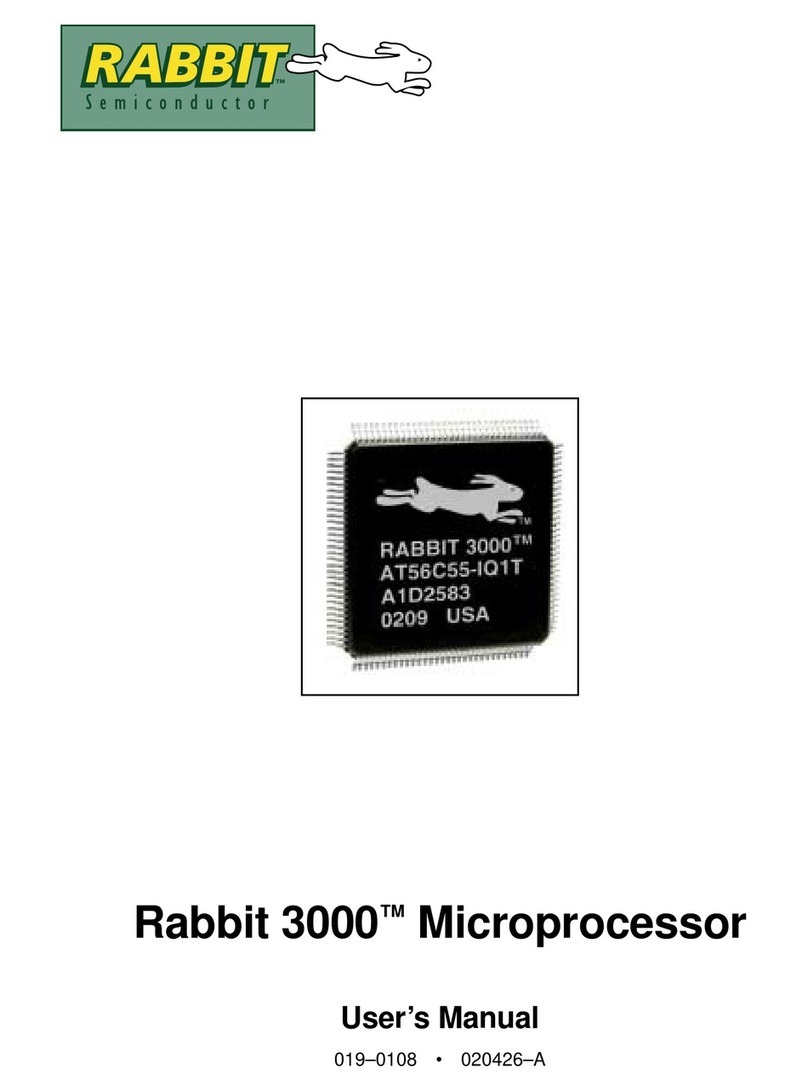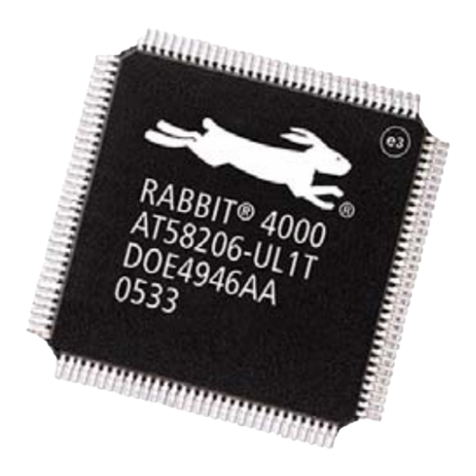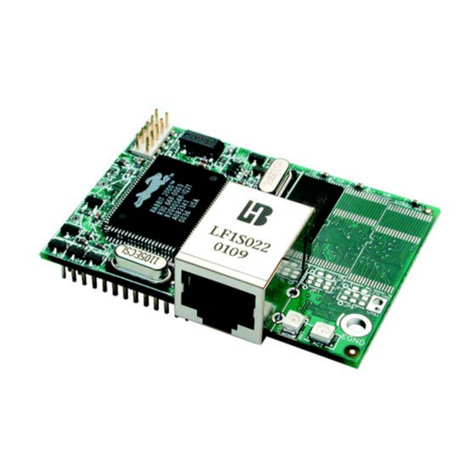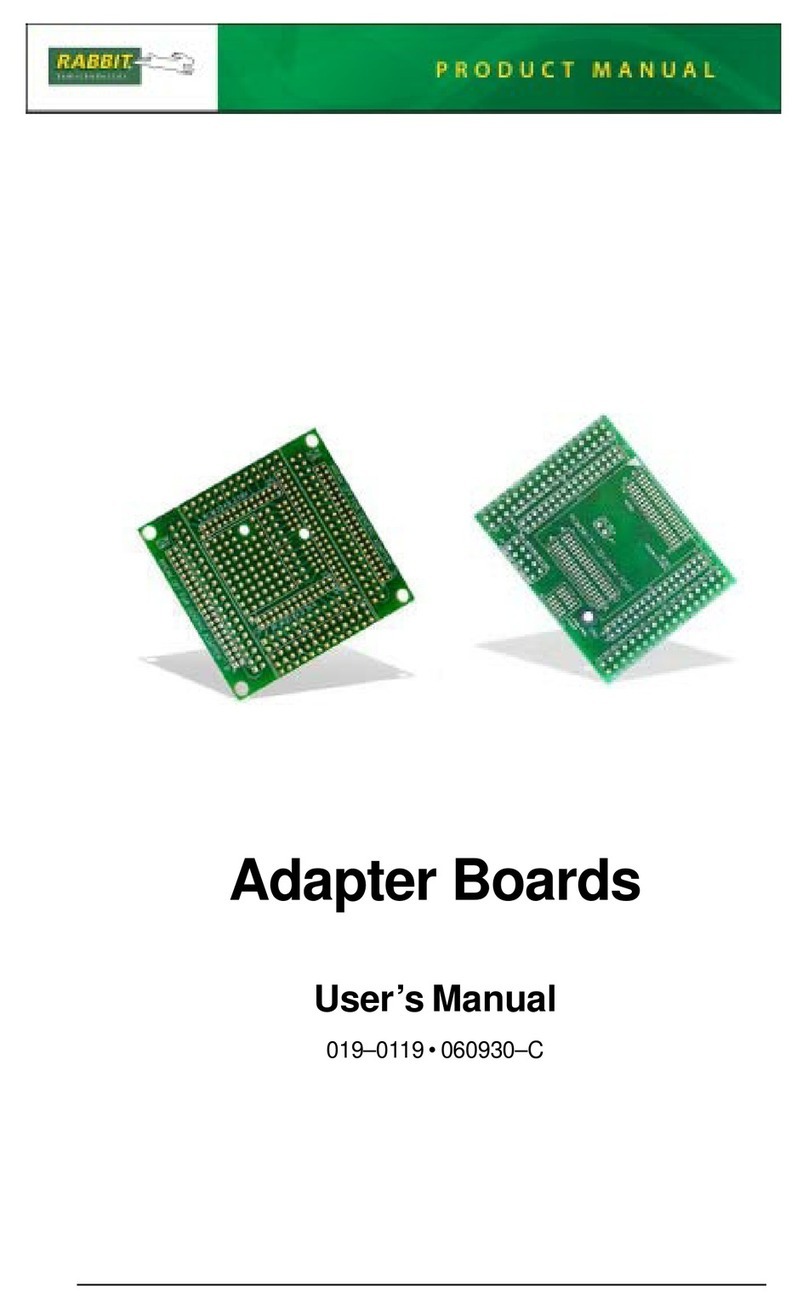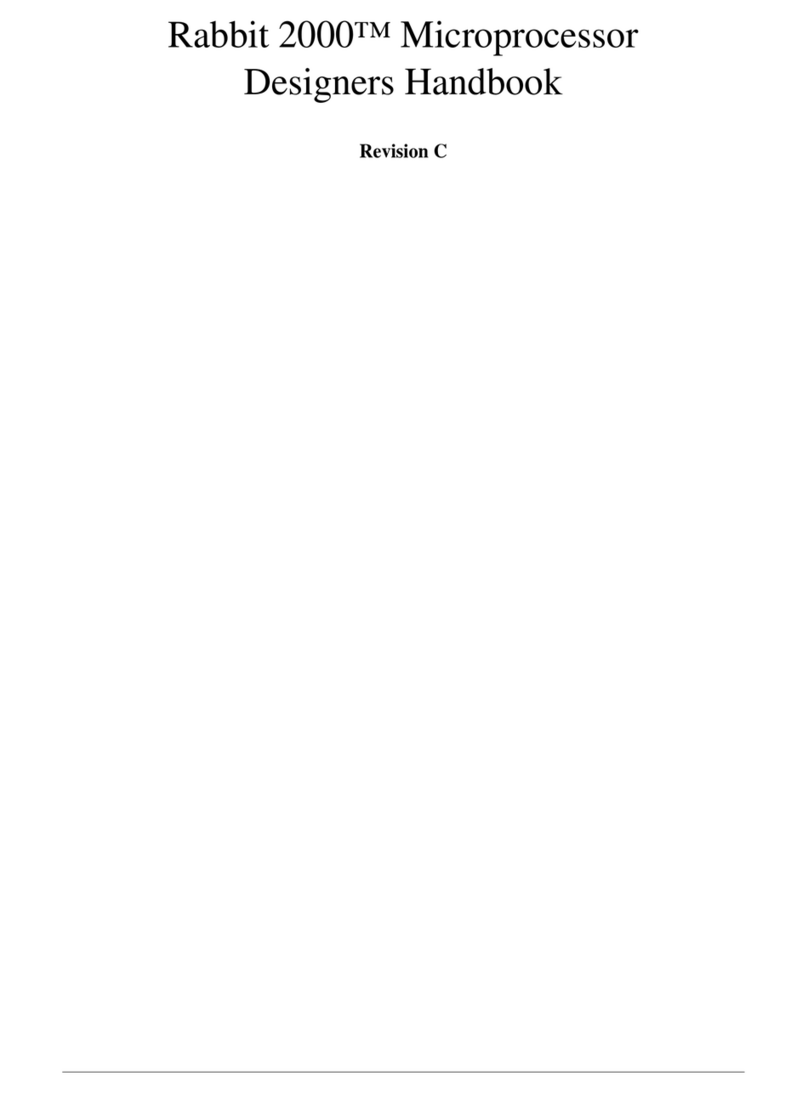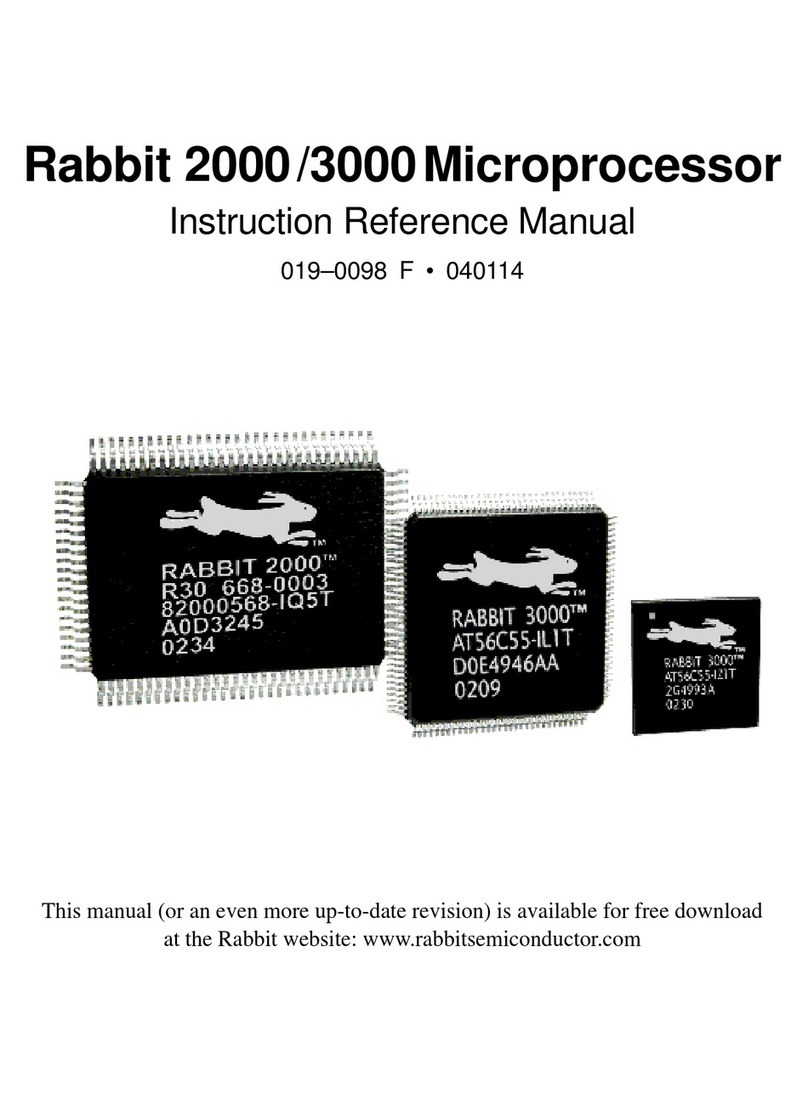User’s Manual
TABLE OF CONTENTS
Chapter 1. Introduction 1
1.1 RCM2200 Features...............................................................................................................................1
1.2 Advantages of the RCM2200 ...............................................................................................................2
1.3 Development and Evaluation Tools......................................................................................................2
1.4 How to Use This Manual......................................................................................................................3
1.4.1 Additional Product Information....................................................................................................3
1.4.2 Online Documentation..................................................................................................................3
Chapter 2. Hardware Reference 5
2.1 RCM2200 Digital Inputs and Outputs..................................................................................................5
2.1.1 Dedicated Inputs ...........................................................................................................................6
2.1.2 Dedicated Outputs.........................................................................................................................6
2.1.3 Memory I/O Interface ...................................................................................................................6
2.1.4 Other Inputs and Outputs..............................................................................................................8
2.2 Serial Communication ..........................................................................................................................9
2.2.1 Serial Ports....................................................................................................................................9
2.2.2 Ethernet Port .................................................................................................................................9
2.2.3 Programming Port.......................................................................................................................10
2.2.3.1 Alternate Uses of the Programming Port ........................................................................... 10
2.3 Memory...............................................................................................................................................11
2.3.1 SRAM .........................................................................................................................................11
2.3.2 Flash EPROM.............................................................................................................................11
2.3.3 Dynamic C BIOS Source Files ...................................................................................................11
2.4 Other Hardware...................................................................................................................................12
2.4.1 Clock Doubler.............................................................................................................................12
2.4.2 Spectrum Spreader......................................................................................................................12
Chapter 3. Software Reference 13
3.1 More About Dynamic C .....................................................................................................................13
3.2 Programming Cable............................................................................................................................14
3.2.1 Changing from Program Mode to Run Mode.............................................................................14
3.2.2 Changing from Run Mode to Program Mode.............................................................................14
3.3 Dynamic C Libraries...........................................................................................................................15
3.3.1 I/O ...............................................................................................................................................16
3.3.1.1 PCLK Output...................................................................................................................... 16
3.3.1.2 External Interrupts.............................................................................................................. 16
3.3.2 Serial Communication Drivers....................................................................................................17
3.3.3 TCP/IP Drivers............................................................................................................................17
3.4 Sample Programs................................................................................................................................18
3.5 Upgrading Dynamic C........................................................................................................................19
3.5.1 Upgrades .....................................................................................................................................19
